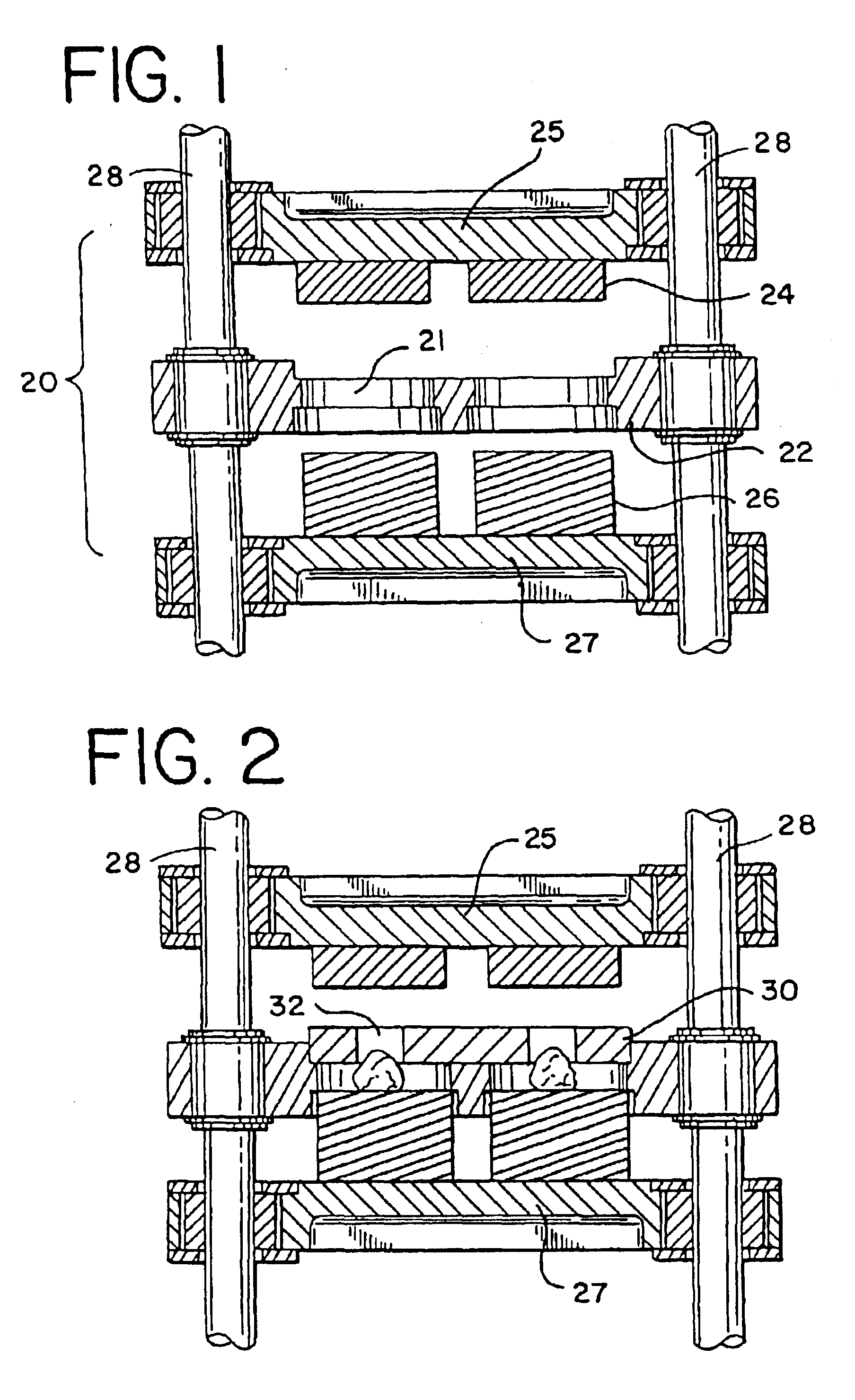Method for making a puffed food starch product
a technology of food starch and puffing, which is applied in the field of puffing food starch products, can solve the problems of product sticking to the teeth, lack of appealing visual texture of conventional snack foods, and substantial waste for some consumers, especially children, and achieves superior puffing, reduced pressure in the chamber, and more heat energy.
- Summary
- Abstract
- Description
- Claims
- Application Information
AI Technical Summary
Benefits of technology
Problems solved by technology
Method used
Image
Examples
Embodiment Construction
[0050]While the invention is susceptible of embodiment in many different forms, this disclosure will describe in detail preferred embodiments of the invention with the understanding that the present disclosure is to be considered as an exemplification of the principles of the invention and is not intended to limit the broad aspect of the invention to the embodiments illustrated.
[0051]Product the puffed or popped food starch products of the present invention provide a number of advantages over prior puffed food starch cake or cracker products. It is believed that the products are lighter, crispier, and have a more appealing visual texture as well as texture to the mouth when consumed. In some cases products made in accordance with the invention are believed to have a more natural, unprocessed appearance, as illustrated in FIGS. 8-17.
[0052]However, the wavy, natural appearance provides functional advantages over the prior art as well. The undulating surface allows snack dips to be mor...
PUM
 Login to View More
Login to View More Abstract
Description
Claims
Application Information
 Login to View More
Login to View More - R&D
- Intellectual Property
- Life Sciences
- Materials
- Tech Scout
- Unparalleled Data Quality
- Higher Quality Content
- 60% Fewer Hallucinations
Browse by: Latest US Patents, China's latest patents, Technical Efficacy Thesaurus, Application Domain, Technology Topic, Popular Technical Reports.
© 2025 PatSnap. All rights reserved.Legal|Privacy policy|Modern Slavery Act Transparency Statement|Sitemap|About US| Contact US: help@patsnap.com



